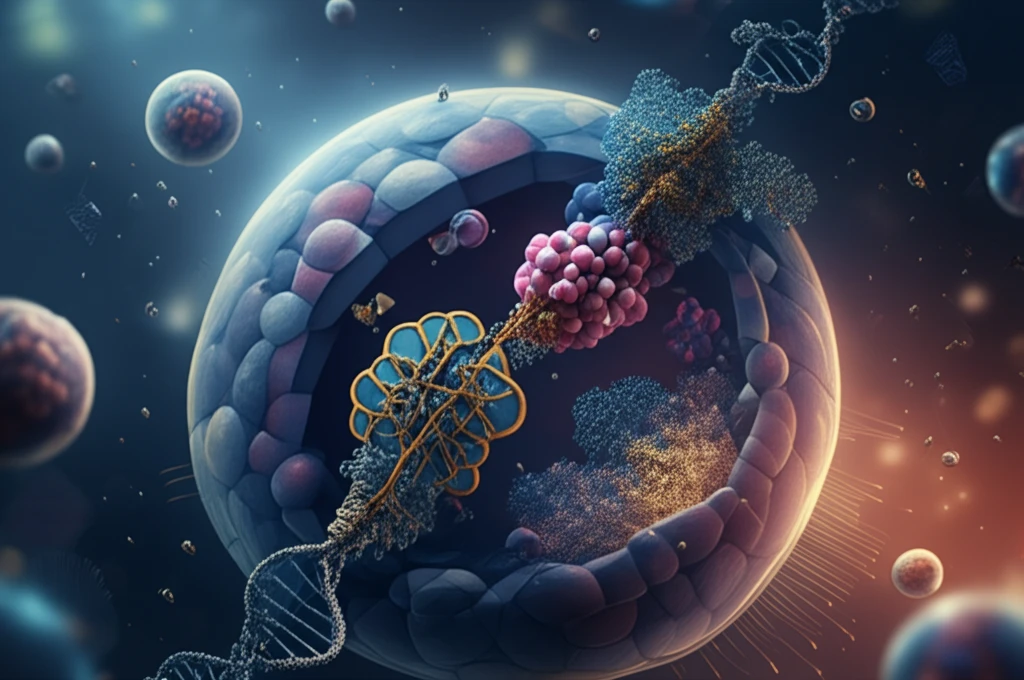
Decoding Gene Regulation: How Coactivator Complexes Orchestrate RNA Polymerase II Transcription
"Unraveling the global role of SAGA and TFIID complexes in the intricate process of RNA polymerase II transcription and their implications for gene expression."
The synthesis of messenger RNA (mRNA) is vital. RNA polymerase II (Pol II)-mediated transcription stands as a highly regulated process. It determines cellular function and cell identity through the accurate synthesis of mRNAs. This regulation, particularly at the initiation stage, is a key mechanism to control gene expression.
Initiation requires the basal transcription machinery, which includes Pol II and general transcription factors (GTFs). This machinery nucleates the pre-initiation complex (PIC) on gene promoters. TFIID, comprising the TATA-box binding protein (TBP) and TBP-associated factors (TAFs), is the first GTF to bind promoter sequences. Once bound, GTFs correctly position Pol II relative to the transcription start site (TSS), facilitating the transition to productive elongation.
The compact structure of chromatin presents a barrier to PIC formation. Other transcription factors are required to modulate the chromatin landscape near promoters. These are coactivators, recruited to gene promoters by gene-specific activators. Coactivators possess activities that facilitate transcription, including chromatin remodeling, histone modification, and adaptor functions. While some coactivator complexes regulate specific genes, others, like the Mediator complex, have a more global role. This article will summarize recent insights into the global roles of TFIID and SAGA (Spt-Ada-Gcn5-acetyltransferase) in Pol II transcription in yeast. It will also discuss potential global functions for other coactivators and similar mechanisms in metazoans.
SAGA and TFIID: Key Players in Pol II Transcription

An extensively characterized coactivator is the evolutionarily conserved SAGA complex, which is organized into distinct functional and structural modules. SAGA activates transcription through histone modifying activities, such as acetylation and deubiquitination, and by recruiting TBP to promoters. Early genome-wide analyses of SAGA function in Pol II transcription in budding yeast revealed that deletion of the TBP-interacting subunit Spt3 decreased the steady-state RNA levels of approximately 10% of genes by more than twofold. Meanwhile, 90% of the genes were affected upon conditional depletion of the TFIID subunit Taf1, which is also involved in TBP-recruitment to promoters.
- The Mediator complex is an integral part of the basal transcription machinery, required for nearly all Pol II mediated transcription.
- SAGA activates transcription through histone modifying activities and by recruiting TBP to promoters.
- TFIID directly contacts DNA and interacts with other components of the basal transcription machinery.
Final Thoughts: A Symphony of Regulation
As a global role in Pol II transcription is now proposed for three different coactivator complexes (Mediator, SAGA and TFIID), it is tempting to speculate that other coactivators might also have a broader function than anticipated. Although SAGA, TFIID and Mediator can be considered as general cofactors for Pol II in yeast, it does not imply that each complex makes equal contributions to the expression of every individual gene. Delving into the intricacies of how these coactivators function provides a richer understanding of gene regulation and its impact on cellular processes.
